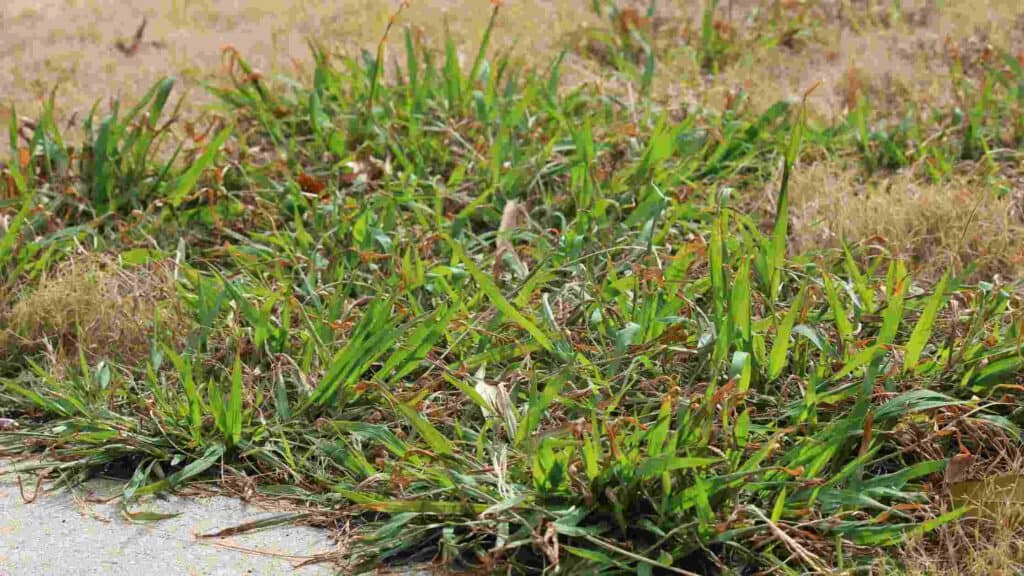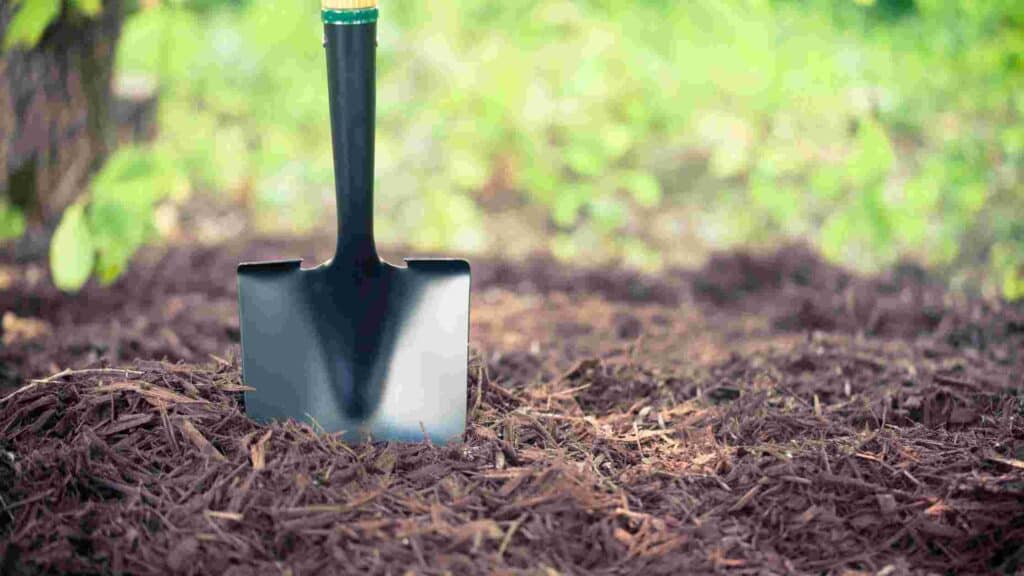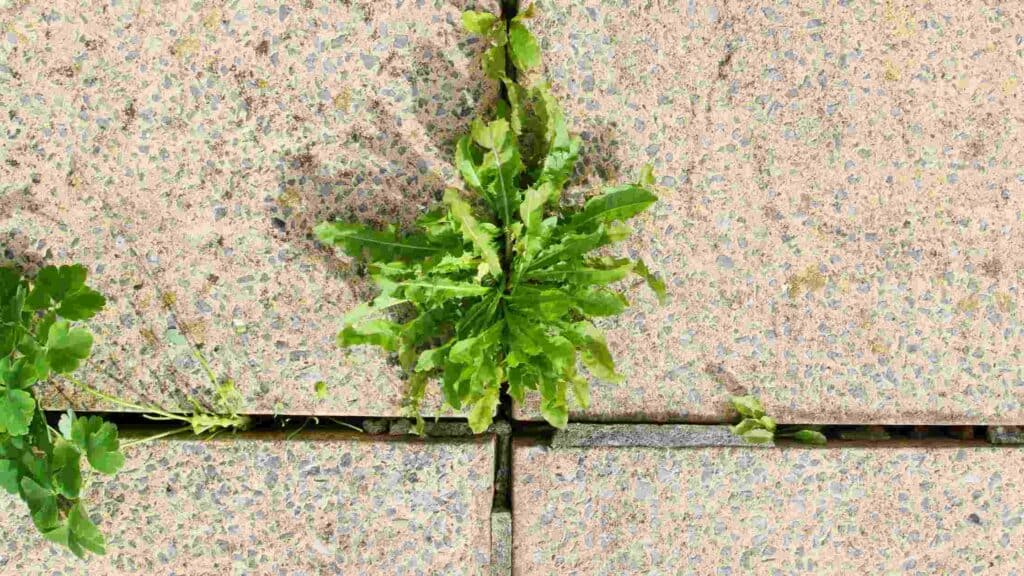In this article, we’ve got you covered with some tips on how to kill grass and weed for good.
We all dream of that picture-perfect, immaculately groomed lawn, but let’s face it – those patches of unwanted grass and stubborn weeds can be a real eyesore.
How To Kill Grass And Weeds Naturally
We all know the struggle – those weeds just won’t stop creeping into our flower beds. Sure, you could use herbicides, but why not go the natural route?
We’ve got some fantastic ways to naturally remove unwanted grass and weeds, using items you probably have lying around at home.
Let’s dive in!
1. Block Their Sunlight
Cutting off the sunlight to the weeds results in no energy production which reduces the chance of survival.
You can achieve this by layering several sheets of newspaper, black plastic, or cardboard over the area where the weeds are seen. They won’t be able to photosynthesize and die eventually.
For a pro-level move, you can use a weed mat designed just for this purpose. Cover those layers with mulch to create a fortress of darkness. This method works well, especially if you’re prepping a larger area for a vegetable garden (here’s how to get rid of backyard mushrooms)
2. Homemade Solution – Cheapest Way To Kill Grass And Weeds
You create your very own weed-killing solution with pantry staples. Here’s the recipe for this solution: mix ¼ cup of liquid dish soap, 2 cups of salt, and 4 cups of hot vinegar.
The vinegar and salt are good at sucking the moisture out of those weeds. And the dish soap? It reduces the surface tension so the solution can be absorbed by the plants.
On a sunny day, spray this solution on those weeds, and in just a few hours, you’ll see them turn brown and wither away.
But this natural remedy won’t go deep into the root system like some chemical solutions. So, be ready for a few repeat performances to keep those weeds at bay.
Why Weeds Are Difficult To Deal With

Before we dive into weed removal, let’s understand why these garden nuisances are so tricky to eliminate. Killing them permanently isn’t a walk in the park (check out how to kill thistle weeds).
The key is to go for the roots! Some of these plants are real survivors, dropping seeds as you remove them, and even regrowing from the tiniest bits left in the soil. So, we’ve got to make sure we remove the entire root system of these plants.
Weeds have a knack for spreading, thanks to their generous seed production, rapid germination, and the ability to lurk in the soil for ages. They’re good at invading areas with heavy foot traffic too.
Not to mention, they take up all the resources like light, space, nutrients, and water, leaving the garden plants struggling to thrive. They also become hosts for diseases and insects.
Weed Elimination Tactics
Now, let’s talk about how to reclaim our gardens and remove those weeds.
The effectiveness of different weed killers depends on various factors, such as the type of weed, where it’s hanging out, the rest of your garden set up, and the method you choose. Plus, the climate plays a role too, so be mindful of that.
1. Prevention Is The First Line of Defense
One of the best ways to thwart those weed invaders is to nip them in the bud, quite literally. Stop them from taking root!
You can do this by considering a chemical option like pre-emergent herbicides. These products stop weed seeds from sprouting and are designed to target specific weed types.
Once you’ve treated the area, give it a good soak to activate the product.
2. Tight Plant Spacing
Weeds love to pop up in those open, sunny spaces between your garden plants. Prevent this from happening by planting your veggies, shrubs, and flowers closer together, following the recommended spacing.
Consider using block spacing instead of traditional rows, as it helps eliminate those tempting open areas where weeds love to sprout.
3. Mulch: Will Mulch Kill Grass And Weeds?
One of the most effective tools to combat weeds is mulch.
Spread a generous layer of mulch around your plants. Not only does mulch retain moisture in the soil, but it also smothers those little weed seeds before they have a chance to see the light of day.
Essential Tools For Weed Removal

Let’s arm ourselves with the right tools to tackle those weeds head-on. Here are the must-haves:
1. Hoe
For a slightly larger-scale weed-removal operation, a hoe is a great tool. With a swift motion, you can cut those weeds right at the base, making sure they won’t come back.
2. Weed Pulling
Hand-pulling might seem simple, but it’s effective (find out our top pick for the best weeding tool). Grab those weeds by the roots and yank them out! Just make sure the soil is damp and moist for smoother weed eviction.
3. Chemical Solution
When the situation gets tough and the weed seems unstoppable, it’s time to bring out the chemical weed killers (check out the best weed killer for lawns).
These products can be selective, targeting specific weed types without harming your plants, or non-selective, which means they can affect all the plants. Choose wisely and follow the instructions carefully!
Weeding Your Lawn
Your lawn needs some work, and those grassy weeds like crabgrass require swift action and patience.
Here’s the deal: herbicides are effective in this case. These products spread from the leaves to the roots of the growing weeds, knocking them out for good.
Go for a weed killer specifically designed for lawns, ensuring it targets the weed while sparing your grass. They come in ready-to-use, solid, or liquid forms, and they eventually break down in the soil.
Best Time For Weed Removal In The Lawn
Timing is everything when it comes to weed removal. The perfect moment is when the soil is still damp and moist after a good rain.
Wet soil makes it easy to pull those weeds out with their roots, leaving nothing behind. You don’t want to miss any roots, or else those weeds will make a comeback.
Tips For Applying Herbicides
When using herbicides, follow these tips to ensure a successful result:
- Measure the area you’re treating, especially for large lawns.
- Carefully read and follow the label instructions.
- Keep those glyphosate mixes free of any dirt or soil.
- Apply the weed killer when the plants are actively growing – typically during spring, summer, or autumn.
You might also be interested in checking out our guide on the best dandelion killers.
Removing Weeds In Patios Or Paths

Patios and paths are no exception to the weed invasion. If a few weeds dare to pop up through the cracks, here’s how to get rid of them:
1. Salt Solution – Will Salt Kill Grass And Weeds?
Dissolve one 1 cup of salt in 2 cups of boiling water and pour it on the weeds.
2. Killing Weeds With Bleach – Will Bleach Kill Grass And Weeds?
Pour a little bleach on those weeds and let it work for a couple of days. Then, pull those weakened plants out with ease.
3. Killing Weeds With Vinegar – Will Vinegar Kill Grass And Weeds?
Some gardeners swear by full-strength white vinegar or apple cider. Just spray it on the weeds but be sure to check the weather forecast first. Rain can dilute its power!
You may also be interested in finding out how to get rid of winter weeds.
FAQs
1. How do I permanently get rid of grass?
To permanently get rid of grass, you can use methods like smothering with mulch or plastic, repeated tilling, or applying non-selective herbicides.
2. What kills weeds permanently in grass?
Non-selective herbicides containing glyphosate can kill weeds permanently in grass but should be used with caution to avoid harming desirable plants.
3. What is the fastest way to kill grass?
The fastest way to kill grass is by using non-selective herbicides, but it may also harm other plants in the area.
4. How to go about killing weeds in lawn without killing grass?
To kill weeds in a lawn without harming the grass, use selective herbicides that target specific weed types while sparing the grass.
5. What is the chemical to kill grass permanently?
Glyphosate-based herbicides are commonly used to kill grass permanently, but they should be used carefully as they can also harm other plants.
Conclusion: How To Get Rid Of Grass And Weeds
Sometimes, you might find yourself needing to put an end to some grass. The reason could be anything from weeds to starting fresh with a new project. Whatever the case, you’ve got options!
When it comes to removing weeds and grass, you’ll need to consider the extent of the problem and what you’re aiming for. Herbicides and natural remedies offer targeted solutions to preserve your favorite plants while dealing with weeds.
Armed with these strategies, you’re now ready to take on the weed and create a beautiful, weed-free garden.
